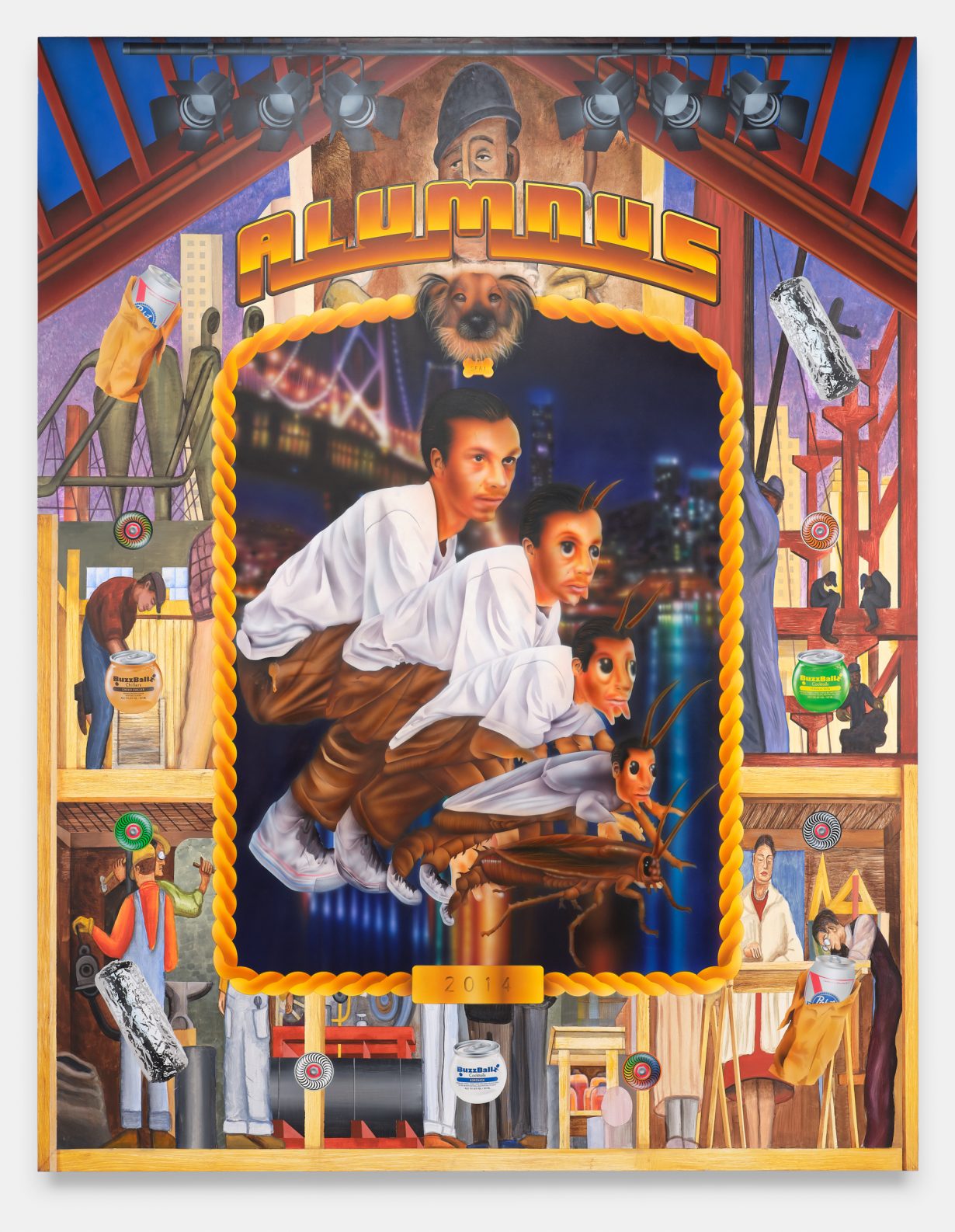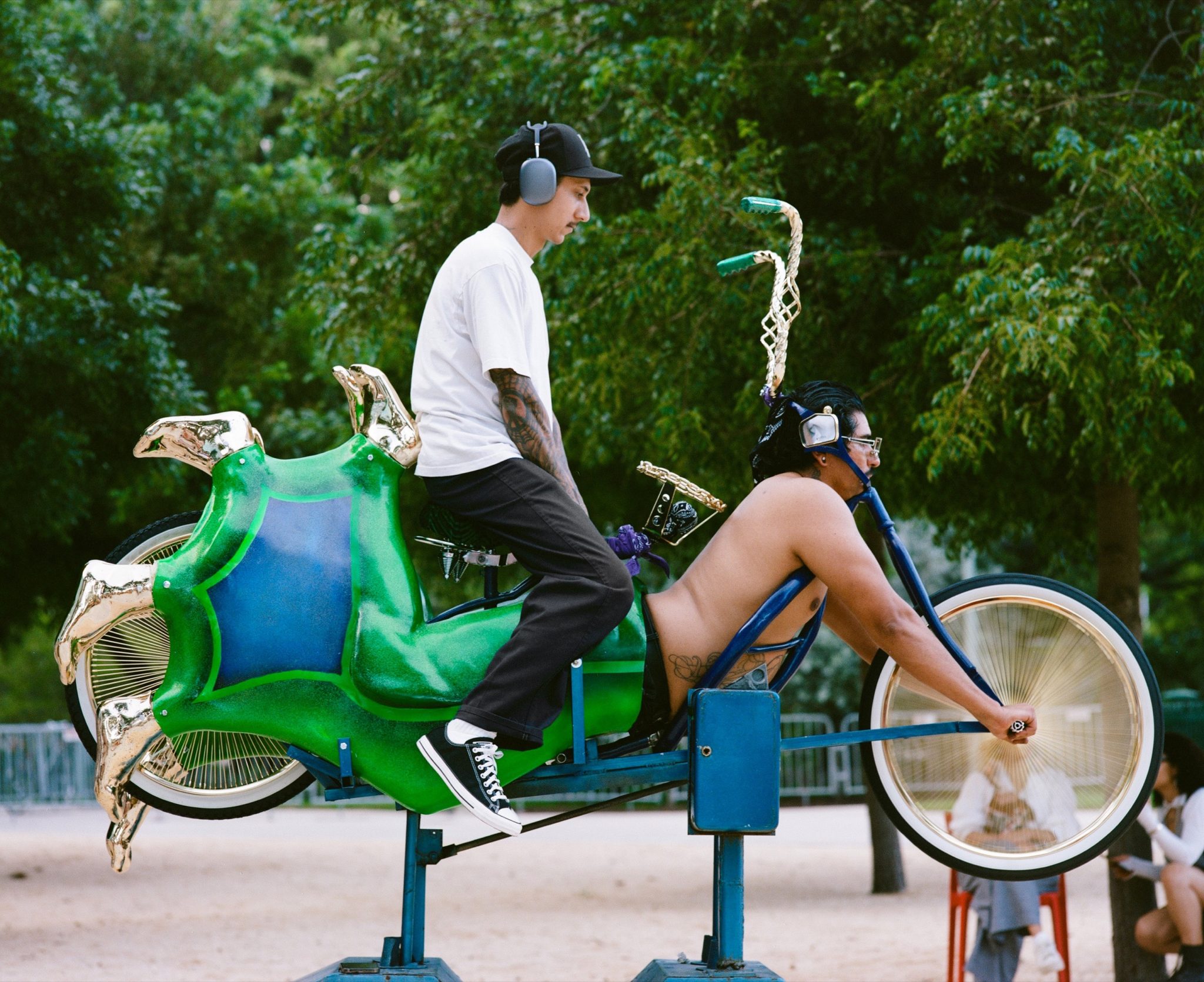A show by Mario Ayala, rafa esparza and Guadalupe Rosales at SFMoMA, Sitting on Chrome celebrates Chicano culture’s resilience and creative prosperity
This three-person exhibition comes at an auspicious time. In October of last year, California’s governor signed a bill into law that would lift the state’s lowrider ban and welcome cruising back on the streets by the beginning of 2024. These customised cars, often with bold colours, lowered bodies and custom enhancements, have been a touchstone of Chicano cultural identity since the 1940s, starting out in the barrios of East Los Angeles. However, in what is generally seen to be a racially targeted move, multiple bans across the state, some introduced as early as 1958, made lowriders and cruising illegal. Despite this, these hot rods’ artistic and cultural influence has, over the years, grown into a nationwide subculture. Here, however, Guadalupe Rosales, Mario Ayala and rafa esparza consider the lowrider in the context of their native California.
For Rosales, memories are the starting point of the lowrider history she believes isn’t being ‘preserved in institutions’. ‘Drifting on a Memory’ (a dedication to Gypsy Rose) (2023), an installation set into the wall and viewed through a window, seems best to articulate the personal and collective significance of this lifestyle. Lush blue velvet borders the exterior frame, while the inside is lined on all sides with tufted pink velvet. A disco ball and set of dice hang from the ceiling above pink silk roses and a blue bandana that are laid on the base. Here, Rosales recreates the marvellously bold interior of the most famous lowrider, Gypsy Rose, for museum audiences. The visual vivacity paired with its humble rose offering for the car’s late owner and creator, Jesse Valadez, makes ‘Drifting on Memory’ feel authentically personal.
Ayala’s Reunion (2021) is a delightfully eccentric self-portrait that depicts the artist gradually transforming into a cockroach, replicating a cover from the popular children’s book series Animorphs (1996–2001) and calling to mind Kafka’s The Metamorphosis (1915) and racial stereotypes of La Cucaracha. A painterly recreation of Diego Rivera’s The Making of a Fresco Showing the Building of a City (1931) frames Ayala’s transformation, referencing the literal backdrop of and measure for Ayala’s arts education at the now-shut San Francisco Art Institute (in a promotional video, he explains crits were held in front of the painting), while burritos wrapped in aluminium foil, skateboard wheels and BuzzBallz (a single-serve sugary alcoholic drink) seem to dance over Rivera’s mural. Ayala’s use of irony throughout Reunion – in the wacky cockroach transformation and floating foodstuffs – playfully subverts the weight of prejudice against Mexican Americans by foregrounding the insect’s resilience.

While Rosales’s and Ayala’s works play on memory, esparza’s seem to look to the future. In Corpo RanfLA: Terra Cruiser (2022), a modified blue bicycle, with gold gauntlets grasping the front wheel’s hubs and pink and orange leg-casings on the back, is affixed to the base of a coin-operated children’s ride. Though static in the middle of the room, the sculpture is activated during performances (also present as video recordings), when a bare-chested esparza slips his arms and legs into these encasements to become himself a vehicle, ridden by another performer who sits atop him. As I watch the hybrid esparza-vehicle bounce with a performer on his back, the movement evocative of the hydraulic modifications lowriders would install in their cars to sidestep the law, he seems to become a cyborg that physically and metaphorically carries a community, much like the lowrider has done in LA. The work also makes me recall Donna Haraway’s ‘A Cyborg Manifesto’ (1985), in which she discusses the radical possibilities of technological and organic hybridity. Considered against this, esparza’s Corpo RanfLA seems to emphasise the unspecified potential the lowrider has always had, with its mechanical enhancements and expressions of creativity, to service the community.
I must admit, car culture does not interest me. However, Sitting on Chrome’s boldness, nostalgia, authenticity and fun are a testament to Chicano culture’s resilience and creative prosperity. In their 2020 paper, scholars Alejandro Gradilla and Juan José Bustamante argue that the lowrider can be understood as a site of resistance to ‘contest cultural exclusion from white art spaces’. Where better to do that than in a museum of modern art.
Sitting on Chrome at San Francisco Museum of Modern Art, 5 August – 19 February
